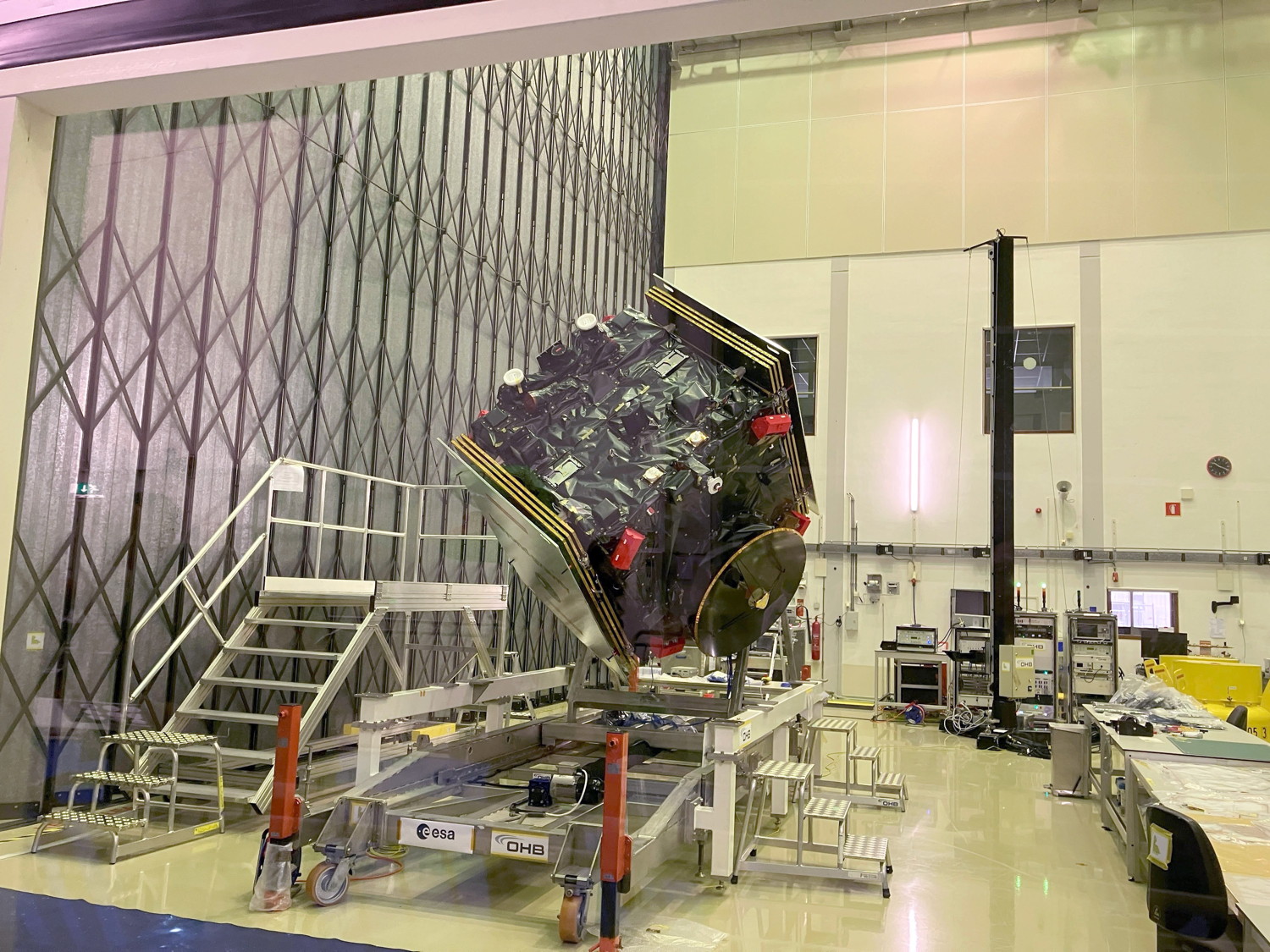The ESA Hera mission to the binary asteroid (65803) Didymos: a few weeks from launch
- 1Université Côte d'azur, Observatoire de la Côte d'Azur, CNRS, , Lab. Lagrange, Nice, France (michelp@oca.eu)
- 2ESA/ESAC, Madrid, Spain
- 3ESA/ESTEC, Noordwijk, The Netherlands
The Hera mission, which is part of the Space Safety Program of the European Space Agency (ESA), will launch on 7 October 2024 (baseline date) from Cape Canaveral with a Falcon 9 from the Space X company. The launch window runs for 3 weeks. At the time of the presentation, the spacecraft will already be at Cape Canaveral for the launch campaign taking several weeks, after leaving Europe by early September. Once launched and after a first phase of commissioning, the first milestone will be a flyby of Mars in March 2025, which will allow the in-flight calibration of the instruments onboard the spacecraft by taking images of Mars and Deimos.
Hera will perform a rendezvous with Didymos in the fall of 2026 and investigate it over 6 months. With NASA’s DART mission, Hera will offer the first fully documented asteroid deflection test. DART successfully impacted Dimorphos, the 150 meter-sized moon of Didymos, on 26 September 2022 at approximately 6.1 km/s. The DART impact resulted in a decrease of 33 minutes from the original 11 hours 55 minute orbital period of Dimorphos around Didymos. However, many questions remain and although Hera returns to the system already visited by DART, the properties of the system will have changed in a way that may surprise us. In fact, it is clear that the Dimorphos that we know from DART’s images before impact will be very different when Hera sees it, reflecting how the DART impact modified it. Thanks to the great efforts of the DART team, the surface properties of the hemisphere of Dimorphos that was imaged before impact are well known, and it will be extremely interesting to see how those properties were changed by the impact. Among the questions that Hera will answer, the most important ones are: (1) What is the mass of Dimorphos, telling us momentum transfer efficiency of the DART impact? (2) What are the internal properties of Dimorphos, largely influencing the interpretation of the outcome of the DART impact? (3) What is the final state of Dimorphos, i.e., what is the size of the crater left by the DART impact or was Dimorphos globally or in large parts reshaped by the impact? (4) What is the rotational state of Dimorphos? Did the impact cause it to tumble?
The Hera mission will provide answers to these important questions that will lead to an unbiased interpretation of the outcome of the DART impact, and the possibility to fully validate numerical impact models aimed at reproducing the impact. With its mother spacecraft, which carries five instruments including a thermal infrared imager contributed by JAXA, and its two cubesats, Juventas, devoted to geophysics and Milani, devoted to mineralogy and dust analysis, Hera will investigate Didymos’ and Dimorphos’ state after the DART impact in great detail and provide measurements that have never been obtained for an asteroid so far. In particular, thanks to the low-frequency radar JuRa onboard the Juventas Cubesat, the first measurements of subsurface and internal properties of an asteroid will be achieved. Moreover, Hera will also perform the first landing of a Cubesat on a body as small as Dimorphos, offering an opportunity to measure the surface mechanical response of an asteroid in a very low gravity environment. Thanks to its detailed characterization of the binary system, Hera will answer key questions regarding the formation of small asteroid binaries and the geophysics of small bodies.
The working groups of the Hera Science Team are, adjusting their investigation plans to account for the new and important knowledge provided by DART and LICIAcube, to support the asteroid phase, including the possible surprises that Hera will offer during its visit to Didymos in late 2026-2027.
P.M. acknowledge support from ESA and CNES.
About half the size of a Smart car, the cubic Hera spacecraft is seen with its solar arrays folded up on each side. Hera’s ‘top deck’ is visible, hosting most of its instruments, including its Asteroid Framing Cameras – seen left top – and the dispensers for its two CubeSats in the middle. Its main antenna used for communicating with Earth is seen to the right. Credit: ESA - S. Blair
How to cite: Michel, P., Küppers, M., Martino, P., and Carnelli, I.: The ESA Hera mission to the binary asteroid (65803) Didymos: a few weeks from launch, Europlanet Science Congress 2024, Berlin, Germany, 8–13 Sep 2024, EPSC2024-56, https://doi.org/10.5194/epsc2024-56, 2024.